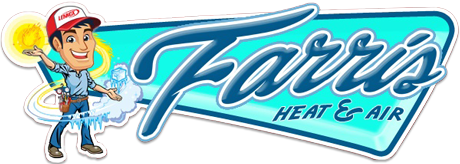
Between a tropical vacation or a lengthy trip for work, leaving home means making plans for your home comfort system. You can't use it as long as you’re not home, so you can adjust the temperature as appropriate to minimize your energy use. Just the same, you shouldn't just shut it down for the entire duration of your trip.
In general, it’s ideal to leave your HVAC system running and just make adjustments depending on the season. That way you can lower energy costs without worrying about returning to an uncomfortable home. We’ll explain why you should leave your HVAC system on as well as the most energy-efficient thermostat settings for different times of year.
Here’s Why You Don't Leave Your Thermostat Alone
While you could be tempted to leave your HVAC system off before a trip, this can end up leading to costly problems by the time you come back. This is particularly true if the weather will be severely hot or cold while you’re gone.
For example, switching the HVAC system down in the summer will sometimes produce very high humidity. Not only will your home feel muggy and uncomfortable when you have returned, but it might have also stimulated mold/mildew growth or pest infestations.
And during the winter, not using the furnace could lead to pipes freezing or even bursting. It’s exhausting to come home from a vacation only to discover considerable water damage close to a broken pipe.
Energy-Efficient Thermostat Settings While at Work
You can make temperature adjustments even if you’re coming and going to work. Since you’re not home for about 8 hours or longer, it doesn’t help your monthly energy bill to keep an empty home at the same temperature you’d usually have. Generally, it’s suggested to adjust the thermostat by 5 degrees or so. This means that if you prefer a comfortable 72 degrees, think about raising it to 76-77 while you’re out.
But you may save even more if you’re willing to further adjust the temperature. As reported by the Department of Energy, you might save around 10% on your HVAC expenses by raising the temperature by about 7-10 degrees.
Energy-Efficient Thermostat Settings While on Vacation in Summer
If you’re leaving for an extended trip in the middle of summer, you can make more significant adjustments. This prevents wasting energy while still safeguarding your home from the problems that come with leaving it uncooled. About 5 degrees is suitable for short trips while closer to 10 degrees is ideal if you’ll be out of town for 2 weeks or more. If you enjoy keeping the house at 72 in the summer, 78-82 will offer the best results.
Recommended Thermostat Settings While On a Trip in Winter
To try and find the best thermostat setting for a winter vacation, consider lowering the temperature by the same amount you would increase it in summer. 68 is a common winter thermostat setting, so adjusting to 63-58 will prevent ice from forming on pipes while minimizing how long your furnace operates.
A Smart Thermostat Can Help: Advantages of Smart Thermostat Installation
One of the best ways to optimize your home’s HVAC system while out of the house is with a smart thermostat. This advanced type of programmable thermostat utilizes intelligent software to understand your typical comfort habits. It gradually understands these preferences and makes automatic changes to the schedule for higher energy efficiency. And with Wi-Fi compatibility, you can remotely access your heating and cooling using a smartphone or tablet.
Smart thermostats are packed with features to help you save even more. For instance, certain models can observe electricity prices to boost heating or cooling when prices are lower. They can be used with high-efficiency, variable-speed equipment to fine-tune how long your HVAC system needs to run. It’s the ideal tool to streamline how you control your comfort system. If you’re considering investing in a smart thermostat, there are multiple ways you can bring down your costs, essentially getting a smart thermostat for free. The next time you are away from home, you can appreciate true peace of mind that your HVAC system won’t stir up any trouble while you’re gone.
